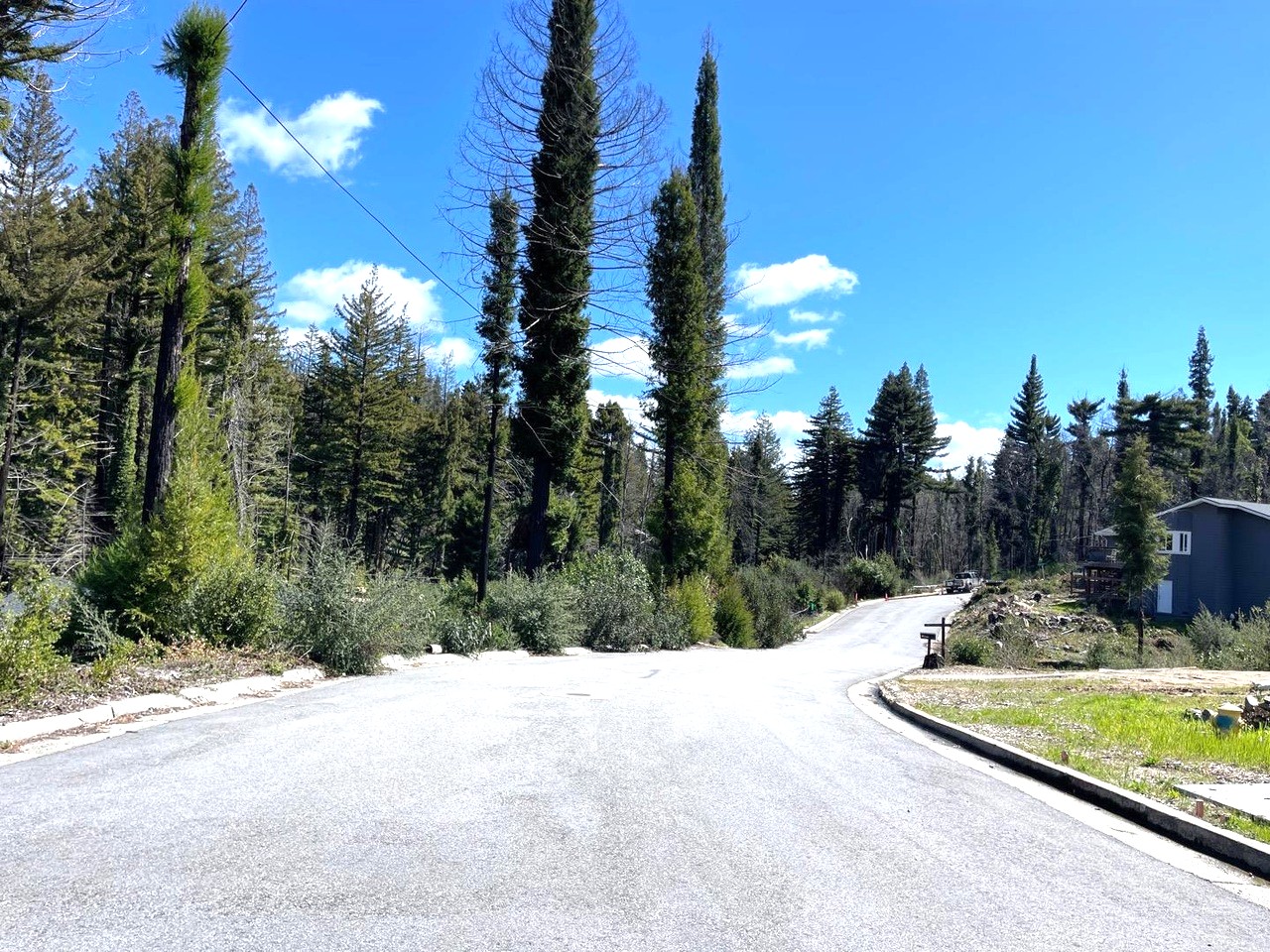Different Markets, Different Directions
By M.C. Dwyer
Last month, there were 14 single family home sales in the San Lorenzo Valley – about the same as January, about 8% more than in February 2024. The number of sales is too small to be statistically accurate, but it seems clear prices rose (3% for the month and 13% for the year). Yet, a full 25% of the nearly 70 homes for sale had dropped their price, as homeowners settled for around 4% under asking price after waiting an average 60 days for an offer. About ¼ of homes sold in 10 days or less-most of those over asking price-illustrating the positive effects of pricing attractively.
Santa Cruz’s housing market turned in strong prices for February, with average prices well above both last month and this time last year (17% and 26% respectively). However, it looks like asking prices were too aspirational: buyers negotiated a 4% discount as the average home took 45 days to find a buyer. The number of homes sold shrank about 15% compared to this time last year, so 23% of listed homes had dropped their prices.
In contrast, neighboring Santa Clara County was cooking with gas: sellers reaped an astonishing 8% over asking price, selling in just 16 days. Only 12% of homes had reduced prices. The number of homes sold rose 2% over last year.
The Big Picture
The US economy grew by 2.3% at the end of last year, supported by consumer and government spending, and imports and exports. Stock markets reached record highs, and unemployment was low at around 4% late 2024. The new administration has set its sights on reducing the size of government via mass reductions in the workforce: this will drive the unemployment rate higher. By March, uncertainty caused the US stock market to suffer around a 10% loss – a six month setback – with new evidence pointing to a shrinking economy during the first quarter of 2025. Since recession is defined as two quarters of economic contraction, it’s being discussed as a possibility. Still, investors assess the risk as low: between 20%-40%. Consumer confidence usually declines during a recession, as unemployment often gets worse and individuals’ sense of financial security can get undermined. Some feel less likely to commit to larger purchases like homes, signaling a challenge for the housing market.
Vox Politics’ correspondent Eric Levitz notes stock market volatility is a reaction to increasing risks, including tariff talk sparking trade wars. Why is the stock market relevant to the housing market? Some home buyers sell their holdings in the stock market for their down payment…plus it affects many consumers’ sense of wealth and confidence. Consumer spending is the key driver of our economy.
Economists explain that tariffs – taxes on imports – are indeed paid by companies that import to the US, but they pass tariffs on to consumers immediately through price increases. For example, Canadian lumber is already 40% more expensive, which may affect new home building. The Peterson Institute estimates current tariffs, if enacted, could cost $1,200 per household. Higher costs lead to inflation, which the Fed wants to keep at 2% or under, and directs partially through setting the Fed Funds rate. If inflation spikes, it’s less likely the Fed would lower their rates.
By late February, rates declined to around 6.8% on the 30 year fixed rate bellwether mortgage, where they remained at press time mid March. Some loans, like the FHA – which offers low down payment loans – fell as low as 6.3%. Many of those who’d put their home buying plans on the shelf, while rates were above 7%, are beginning to apply for mortgages again: applications rose 7%-11% mid March, (year over year and week over week). People are touring homes again, evidenced by busy open houses in our more desirable areas, just in time for the spring selling season.
But, CNBC reports this hasn’t yet translated to more pending sales quite yet. Redfin reported pending sales nationwide were 6% lower than last year.
The combination of stock market volatility, declining job security, and jitters about trade wars may be part of the reason we’ve just experienced among the nation’s highest ever rates of cancelled escrows – 14%! – the highest since Redfin started tracking in 2107. But, these cancellations may also be due to the growing supply of homes for sale – buyers can afford to be pickier.
Perception Imbalance
February’s Home Purchase Sentiment Index (Fannie Mae) noted declining confidence in the housing market: 75% of those surveyed think high prices mean it’s not a good time to buy a home. In contrast, over 60% of homeowners think it’s a good time to sell. This imbalance in perception is a leading factor in the growing number of homes for sale. Interestingly, only 30% of those surveyed still think rates will fall.
Tech’s Influence on Local Housing
Mercury News’ Kate Talerico reports that in Silicon Valley buying a $1.9 million median home requires an income of around $300,000. Santa Cruz County’s average home price of $1.5 million keeps our area a desirable alternative, especially for those who can work from home or commute a few days a week. Since high tech salaries have grown faster than in other industries, the dream of home ownership grows increasingly out of reach for employees in other professions.
The lack of affordable housing poses some threat to the area’s dominance of US high tech regions. Talerico gave the example of Austin Texas where buying the median priced starter home only takes an annual income of around $87,000. For many, many reasons, California’s rate of building new homes lags far behind Texas. As Austin builds more homes, the number of high tech employees is able to grow faster there, attracting talent turned off by Silicon Valley home prices. Still, many local tech employees say the superior talent here generates higher growth and better career results than other regions.
Did you know?
The California Association of REALTORS® advocates for property owners’ rights and home ownership on a national level. Recently, members of the association met with lawmakers and offices on both sides to discuss bi-partisan efforts focused on improving housing affordability and supply across the country. “As Congress looks to make changes to the tax code in the coming year, we asked that they focus on issues that would ease the state’s housing shortage, such as increasing the capital gains exclusion on the sale of a primary residence (More Homes on the Market Act), and maintaining homeownership incentives, such as increasing the cap on the deduction for state and local taxes and maintaining the current mortgage interest deduction.”
Featured Listing

115 Fallen Leaf Drive, Boulder Creek is listed at $99,000.
This peaceful lot in a peaceful Boulder Creek neighborhood comes with a seasonal creek and a chance to build your own home among tall trees. Perfect for a personal retreat or investment, it’s in an area that is beginning to bounce back after the 2020 CZU fire. You’ve got wide streets, electricity, fast internet, water, and sewer ready at the curb, plus a bus stop nearby. The previous layout could support a 3-bedroom, 2-bath home around 1,460 square feet with a garage. It’s half a mile from the golf course and a quick 5-minute drive to town for food and shops. Boulder Creek’s old-time charm and community events add character, and it’s nicely tucked between Santa Cruz beaches and Silicon Valley, blending quiet forest life with easy access. New homes here have listed for about $1.1 million.
M.C. Dwyer
CA DRE License 01468388 EXP Realty of California, Inc.
Serving San Lorenzo Valley and Scotts Valley since 2005
*as of press deadline 3/15/2025
Sources: Bank Rate, California Association of REALTORs®, CNBC, MLS Listings Inc., Mercury News, MPA, Mortgage News Daily, National Association of REALTORs®, Redfin
The statements and opinions contained in this article are solely those of the individual author and her sources, and do not necessarily reflect the positions or opinions of eXp Realty, LLC, or its subsidiaries or affiliates (the “Company”). Neither the author nor the Company assumes any responsibility for, nor warrants the accuracy, completeness or quality of the information provided. Readers’ unique situations merit obtaining individualized professional advice.
The San Lorenzo Valley Post is your essential guide to life in the Santa Cruz Mountains. We're dedicated to delivering the latest news, events, and stories that matter to our community. From local government to schools, from environmental issues to the arts, we're committed to providing comprehensive and unbiased coverage. We believe in the power of community journalism and strive to be a platform for diverse voices.





